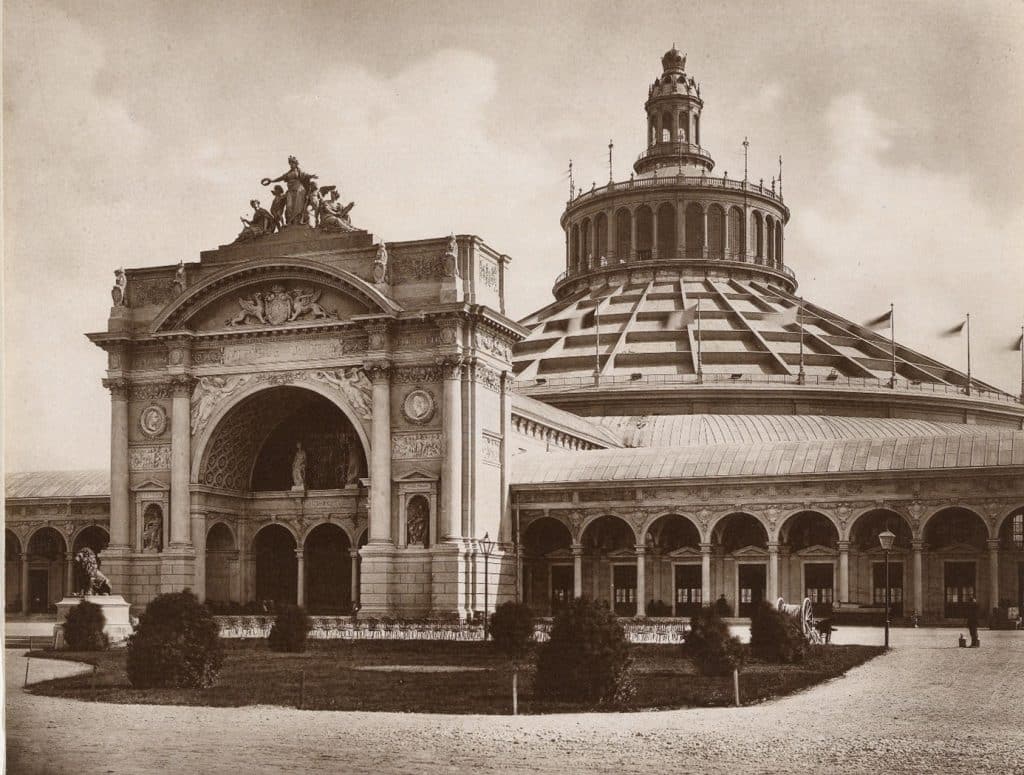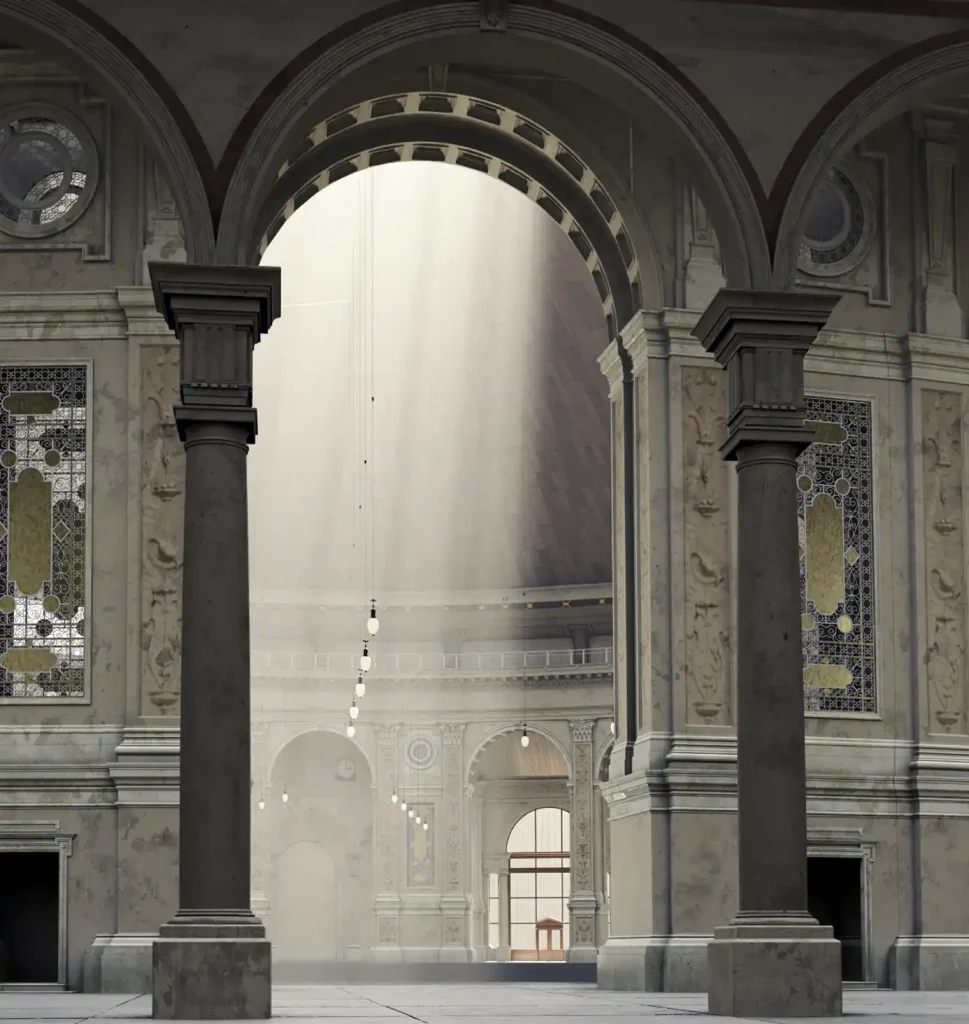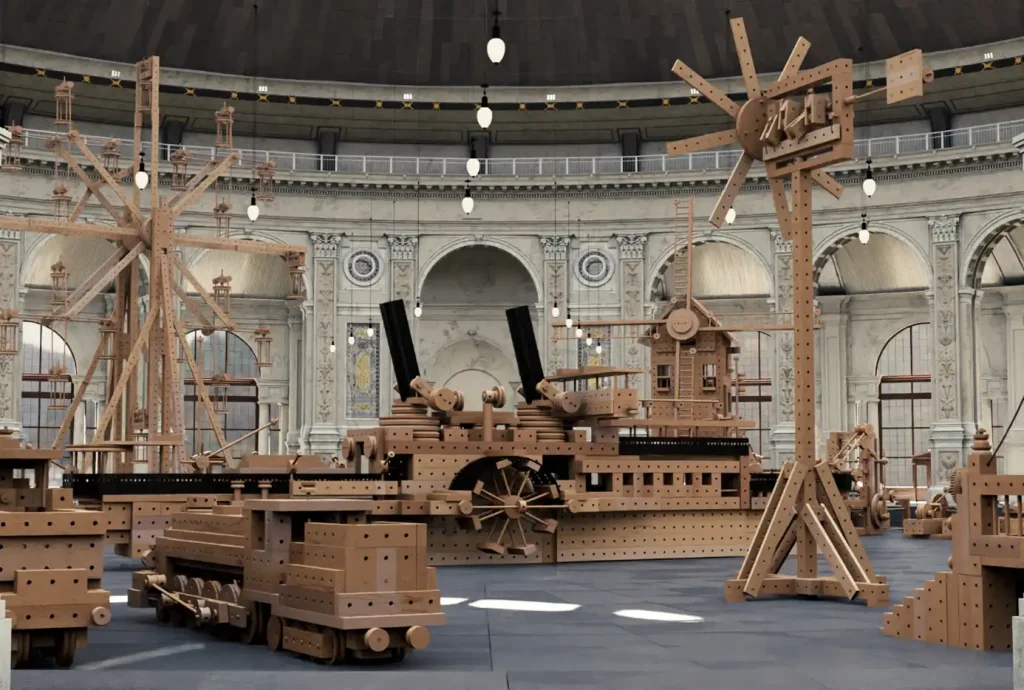Virtual reconstructions find a widely range of application in architecture and are used for documentation purposes, virtual tours, material and surface analyses and many other cases. Rapid technological advances make it possible creating complex building reconstructions on a highly detailed level while simultaneously processing the data in real time environments. Nevertheless, most of these digital building models are used only for visualization and presentation purposes. This reconstruction project aims to go one step further, to preserve an important building digitally and return it to its original use – in a virtual environment.

Illustration 1 György (Johann Justus Georg) Klösz (Kloess), Wiener Photographen-Association (Verlag), Weltausstellung 1873: Rotunde mit Haupteingang, Arkaden und Löwen (Nr. 191), 1873, Wien Museum Inv.-Nr. 75608/22, CC0 (https://sammlung.wienmuseum.at/objekt/553764/)
On May 1st, 1873, on the occasion of the Vienna World’s Fair, the Rotunde opened its doors , the first in the German-speaking world. At that time, Vienna could be viewed as a major construction site: the “Ringstrasse”, the regulation of the Danube, and the construction of the railroad stations were among the urban development projects, that laid the foundation holding the World’s Fair in Vienna. The Palace of Industry was the central building of the exhibition and its longitudinal and transverse galleries covered an area of almost 7 hectares. In the center, the Rotunde was erected for representational purposes, its interior providing space for 27,000 visitors. At the time of its completion, the Rotunde, with a span of 108 meters and a height of 84 meters, was considered the largest domed building in the world and joined the list of spectacular exhibition architecture, such as the Crystal Palace in London or the Eiffel Tower in Paris. Designed by the Englishman Scott-Russel, extended by Wilhelm von Engerth and planned by the architect Carl von Hasenauer, the building complex was erected in just two years of construction. On thirty two riveted steel columns, more than 20 meters high, a tension ring of 104 meters in diameter was placed, which supported the conical roof with the two lanterns. The four-meter-high replica of the imperial crown formed the top of the building at a height of over 85 meters. The Rotunde could be completely circumnavigated on the inside at a height of 23 meters, and the roof provided access to the upper lantern, which offered a panoramic view of Vienna at a height of over 70 meters. Designed as a temporary structure, the Rotunde was used for exhibitions and events for more than sixty years after the World’s Fair. The history of this building, which was initially viewed critically, came to an end with the major fire on September 17th, 1937, but over the years had become an important landmark in Vienna.
With the publication of sketches and photos from the time of the world fair in the online library of the Wien Museum, sufficient information was available for a detailed reconstruction. The creation process could be roughly divided into three phases: First, a precise model with basic geometries was created based on existing sketches. This was followed by the creation of geometric details, such as ornaments and interior fittings, as well as the definition of materials including lighting, in order to obtain the first rendered images. Unreal Engine from Epic games was chosen to build the interactive environment. All the necessary geometry, material information as well as cameras and lights were transferred to Unreal engine and enriched with functionalities for navigation and exploration of the building in realtime.

Illustration 2 Digital Reconstruction of the Rotunde, Rendering in Blender 3.5 with Cycles renderer
The successful creation of the Rotunde as realtime environment was the starting point for defining an exhibition use case. By choosing the Matador toolkit as the central theme of the virtual exhibition, a further context to technological history could be created. It is not known whether the Matador company, which still exists today, ever exhibited its wooden toys in the Rotunde, but in any case the wooden models were widespread in the 1920s and 1930s and offered technology-loving children and adults the opportunity to gain a playful insight into technical development of that time. The exhibition revives this era with detailed models of mechanical engineering and transportation technology. The digitally recreated matador models, have been scaled to the actual size of their real life counterparts and distributed across the huge central space of the Rotunde and can there be viewed from every angle. All of them are equipped with the appropriate wooden textures, and some also have integrated simulations, in which the models´ levers, gears and transmissions can interact with each other. Object information can be displayed interactively for each machine model. In addition to detailed surfaces and materials of the interior, a simulated day and night cycle provides changing lighting moods and is intended to give visitors a realistic impression of the Rotunde. Thanks to the underlying streaming technology, visitors can call up the exhibition in their web browser without any additional software; the complex rendering process runs in the background based on cloud services and sends the necessary 3D data packages to the user.

Illustration 3 Interactive environment of the Rotunde and ongoing exhibition of Matador models
Even if the concept of the metaverse has been treated almost inflationarily in recent times, virtual worlds will take their place in our everyday environments in the future. This approach aims to propagate “pearls” of industrial culture, that are no longer existing, as essential part for virtual environments. This not only provides a digital model of the buildings, but the interaction in virtual spaces leads to a new usage and continues the history of the industrial monument in a new and exciting way. The current status of the development can be followed on the website www.rotunde.wien
